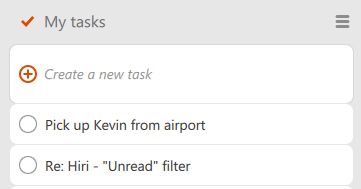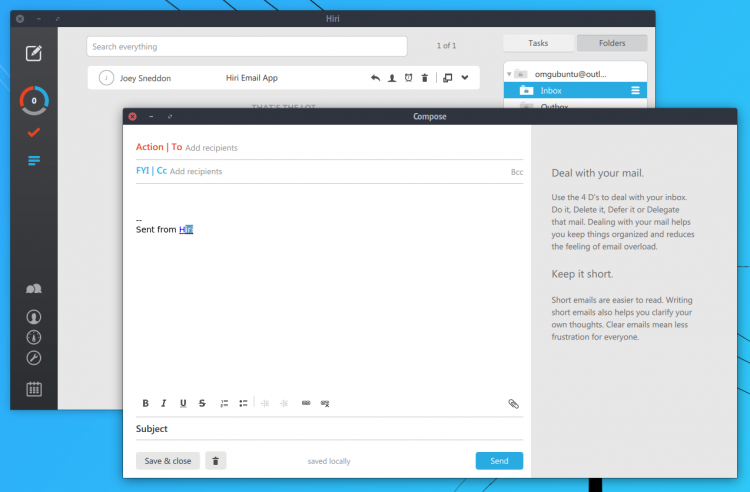

We didn’t want to produce different packages for different distros – an RPM for Fedora, a DEB for Debian and so on.

We didn’t really package Hiri for Linux in the past. How does building snaps compare to other forms of packaging you produce? How easy was it to integrate with your existing infrastructure and process? It wasn’t a cakewalk, but soon we had everything we needed, and it works like a charm.
HIRI EMAIL CLIENT CODE
Canonical (shout out to Alan Pope) were very proactive and weren’t afraid to get their hands dirty and mess about with the code themselves. We didn’t think it was possible to completely confine and sandbox the app. I must admit we were a little skeptical when Canonical first approached us. We just launched our Snap earlier this month and already I can say with certainty that our users have a lot less trouble installing installing Hiri via the Snap. A dependency isn’t where it’s supposed to be or there are conflicting systems and app libraries. We spend a significant amount of time supporting Linux users with slightly different setups. How did you find out about snaps? What was the appeal of snaps that made you decide to invest in them?įragmentation is the biggest problem we face on Linux. The community has been remarkably helpful. And quite frankly, the quality of the feedback you get from Linux users is just fantastic. We’ve always believed that it’s our users that design our product – so this was a win-win for us. They also want to purchase from a company that is willing to engage with them and work with them. There’s a myth out there that Linux users don’t like to pay for software.
HIRI EMAIL CLIENT SOFTWARE
There aren’t many companies producing proprietary software for Linux. We believed that Linux users should have a viable Exchange email client. We hope to support IMAP in future, but it’s a big piece of work. We sync all of your emails, labels, calendar items and tasks. And surprisingly few email clients work with Exchange as Microsoft intended. This is because 95% of businesses use Exchange as their email server of choice.

We chose to support Microsoft Exchange first. Hiri is the product of a lot of research. That would imply that we are simply a pretty clone. We’ve been called a ‘replacement for Microsoft Outlook’, but we don’t just want to be seen as a replacement. People are very unforgiving if they can’t send or receive their emails. Building an email client is really hard! Everything has to work. We’re a small team, and It took two years to build Hiri. It’s especially useful for those that receive a lot of email. On average we spend 2.5 to 4 hours a day managing our email at work. Hiri is a desktop email client, designed to help users get their email under control.
HIRI EMAIL CLIENT INSTALL
Install from Ubuntu Store Can you tell us what is Hiri about? We talked to Dave Power, co-founder of Hiri, to understand how this journey was and the value of snaps for his business. Earlier this month Hiri launched a snap, making their application very easy to be used by Linux users.


 0 kommentar(er)
0 kommentar(er)
